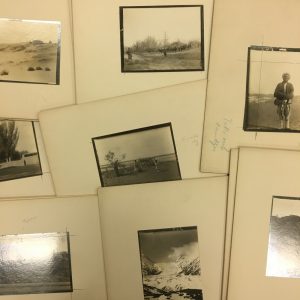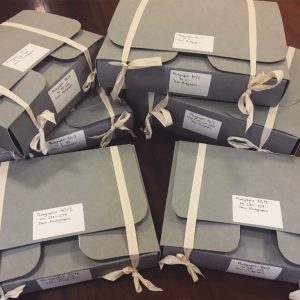Placement at The Royal Asiatic Society
This week’s blog post is written by Carly Bishop, our current placement student:
I am currently studying for an MA in Art History and Museum Curating with Photography at the University of Sussex; as part of the degree students are required to undertake a placement of 120 hours. This enables the students to put the knowledge learnt during the course into practice and having hands on experience of curating and working with archives. My particular interest is documentary photography, so working with the Royal Asiatic Society’s photographic collection has been an interesting and exciting opportunity.
I am at present over half way through the placement and I have been working with the RAS’s two largest collections of photographs. My work began with the Howell collection, these images taken during the late 1800’s are beautifully clear photos depicting anthropology, portraits and landscapes.
My first task was to compare the records on the catalogue against the item to check for accuracy and consistency, making relevant amendment and additions where required. This introduced me to the of the workings of the catalogue, I built up the knowledge of how the photos are catalogued and the data held, this key information would become useful to me when carrying out future tasks. Continuing with the Howell collection I began to assess the current condition of the photos and packaging, replacing it where required to protect the photo and improve usability.

The second collection I am working with is the Stein collection of photographs, a large collection comprising over 800 photos taken by Sir Aurel Stein between the 1900’s and 1930’s. The photos are an exciting varied collection ranging from images of archaeological studies to desert landscapes, architecture to panoramic mountain ranges. These are separated into six parts covering the six series which they were grouped in for publication; the images are mounted and contain the original notes and instructions for the printers to carry out. I began by working methodically through each series, counting and ordering the number of photos to enable me to check them effectively against the catalogue entry and making relevant changes if required. I then moved onto cleaning the mounts before assessing the current packaging and replacing if necessary, and finally making a four-flap archive box for each series to house them.

Whilst delving in to this collection I came across photos which were not labelled or catalogued, under guidance I added these to the catalogue using the existing guidelines and labelled accordingly. I found this quite challenging at first, the accuracy required to enable the future researchers of this archive to locate them was down to me! Once these tasks were completed I moved onto the box of uncatalogued images, this required me to identify which series they were part of by researching and meticulously scouring through the published Stein books to locate them. This was very fulfilling as I managed to identify about half of the photos, the remaining unidentified ones I will work with further to create another series within the Stein collection.

I am finding my placement very enjoyable and rewarding and have been surprised by the multiplicity of tasks required to care for an archive. The work had been varied and I have experienced the diversity of caring for the collections from the concentration and precision needed to audit the catalogue to the practical and creative techniques required to clean photos and construct archive boxes.

In the coming weeks I will continue to work with the Stein collection, but I will also begin to take on more of a curatorial role by creating a display in the reading room,, using Twitter to engage an audience in the collection and produce a webpage highlighting the collections for the RAS website.
